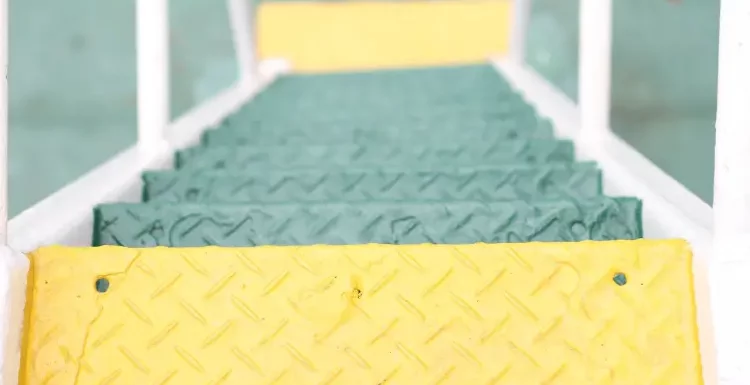
The vast majority of roofs are high up and difficult to access from the ground. Homeowners and professionals can examine, upkeep, and repair roofing components thanks to ladders’ safe and practical access to the roof. Carrying tools, supplies, and equipment to and from the roof is a common part of roof repairs. These objects can be transported effectively using ladders, requiring fewer trips from the ground to the roof and vice vers.
In comparison to other approaches like climbing on chairs, tables, or other unstable objects, using a ladder ensures a safer technique of working on the roof. In order to lower the possibility of falls and injuries while performing roof repairs, ladders are built with safety elements including rungs, side rails, and stabilizers.
Nevertheless, you cannot erase the fact that it can be scary, risky and a bit dangerous to climb a tall ladder, especially if you haven’t tried doing it before. Of course, the height, the steepness, the gaps, the shaky legs and many more can cause you to get paranoid and to panic while attempting to go up the ladder.
That is exactly why this article was written! To help you with this, here are x ladder safety tips for your DIY roof repairs for your home.
1 – Wear proper clothing, accessories and gears.
When embarking on DIY roof repairs, it is imperative to prioritize your safety by donning appropriate safety gear and clothing. This includes a sturdy hard hat to protect your head from potential falling debris, safety goggles to shield your eyes from flying particles, and work gloves to safeguard your hands against sharp edges and rough surfaces.
Additionally, consider wearing long-sleeved shirts and pants to provide an extra layer of protection from the elements and potential abrasions. By taking these precautionary measures, you can significantly reduce the risk of injuries while working at heights.
2 – Verify the sturdiness of the ladder.
Before ascending the ladder, take a moment to meticulously inspect its overall condition and stability. Look for any signs of damage, such as cracks, dents, or loose screws, as these could compromise the ladder’s structural integrity.
Moreover, make sure that all the ladder’s components, including the rungs and side rails, are securely attached and in good working condition. Only use ladders that have been properly maintained and are free from defects, as a solid and sturdy ladder is the foundation for a safe roof repair endeavor. If it’s wobbly or shaky, it’s not good.
3 – Employ the right equipment.
Successful roof repairs necessitate the use of appropriate equipment to size up both your safety and the efficiency of the task at hand. Choose a ladder that is specifically designed for the job, taking into account factors such as the required height, weight capacity, and material construction. Look into ladder levelers or stabilizers if the ground is uneven, as they can provide added stability and prevent the ladder from wobbling or tipping over during use. By using the right equipment, you can optimize your performance and minimize the risk of accidents.
4 – Position yourself correctly.
During roof repairs, it is essential to maintain a safe distance from the edge of the roof to avoid potential hazards. Cutting too close to the trunk or edge increases the risk of losing balance and falling off the roof. Always exercise caution and work from a position that keeps you well-centered on the stable part of the roof.
5 – Secure the ladder.
Before commencing any climbing, guarantee that the ladder is securely situated and stationed stably to prevent unintended movement or slippage during use. Utilize ladder locks or tie-offs to anchor the ladder to a stable support, such as the roof’s edge or a sturdy fixture, ensuring it remains firmly in place. This precautionary measure significantly reduces the tendencies of accidents caused by ladder instability, providing you with a reliable and safe core to work from.
6 – Ask for assistance from your home.
Roof repairs can be challenging and unpredictable, making it crucial to have a reliable partner or assistant present. Adopting the buddy system lets you have someone to provide immediate assistance in case of an emergency.
A spotter can hold the ladder at the base while you work on the roof, especially if the repair job involves carrying tools or materials up and down, to ascertain extra stability and assistance if needed. With the support of a buddy, you can address potential risks more effectively, fostering a safer and more productive work environment.
7 – Seek expert help.
While DIY roof repairs can be a satisfying endeavor, some tasks may require specialized knowledge and experience. If you encounter complex or unfamiliar repair issues, do not hesitate to seek expert help. Look for reputable residential roofers or commercial roofing contractors for your roof repair needs.
Professional roofers possess the expertise, equipment, and training necessary to address intricate roof problems efficiently and safely. Avoid attempting risky repairs beyond your capabilities and rely on qualified professionals to eye on the integrity and longevity of your roof.
UP AND DOWN
Ladders can swiftly offer access for temporary repairs in the face of unexpected and violent roof damage caused by storms or other situations until more extensive remedies can be taken. They can be used for basic roof maintenance jobs like gutter cleaning, investigating damage, and clearing away debris that might build up on the roof as time goes by.
Keep safe while working on your roof. Make sure that your ladders are ready!
